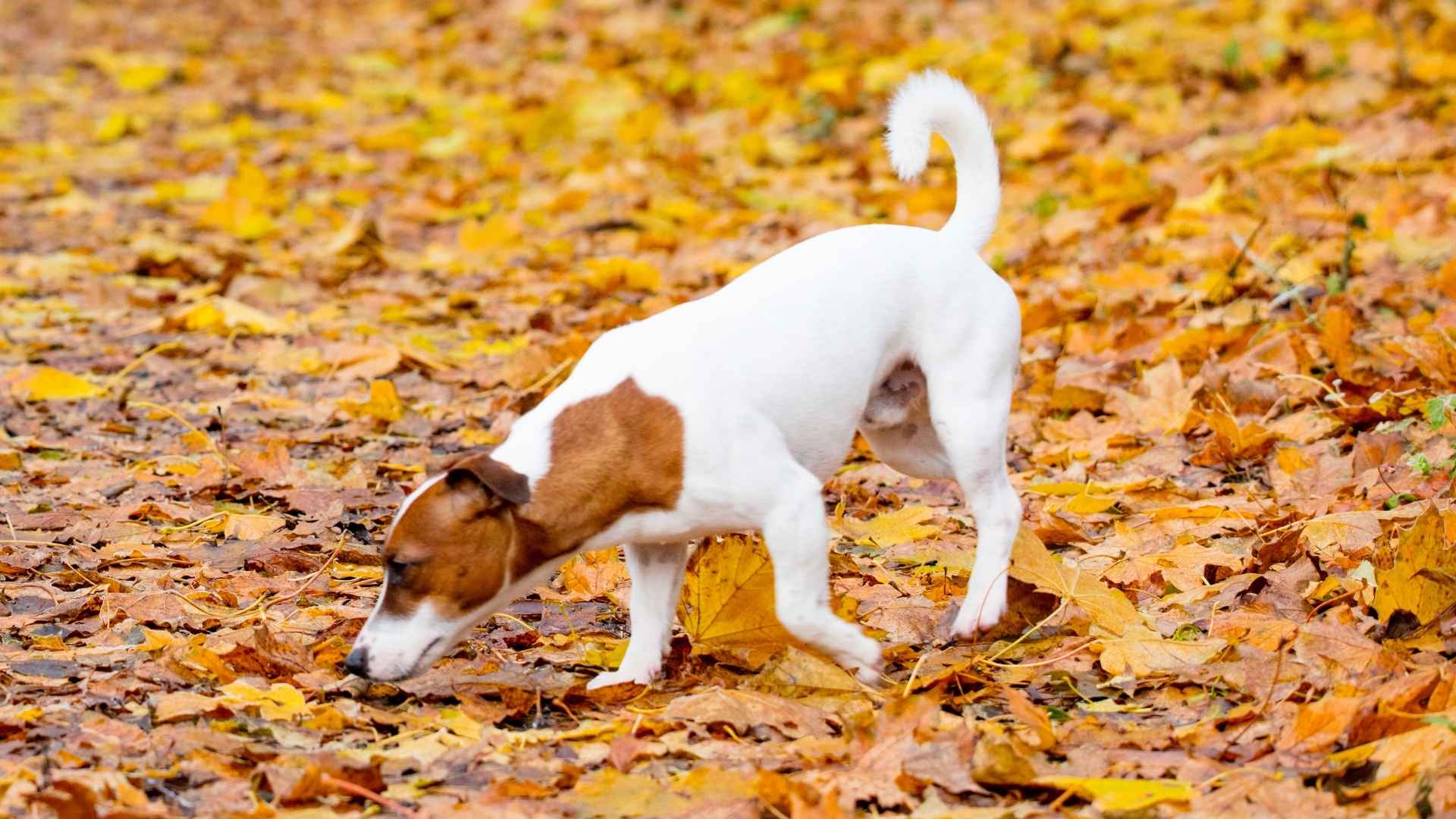Ever wish you had a furry snake detector that could warn you before danger slithers in? Believe it or not, some dog breeds come hardwired with the instincts to sniff out and alert you to snakes—even the ones hiding underground.
Whether you live near wooded areas, on a farm, or in snake-prone country, having the right dog could be the natural line of defense your family needs. Dogs have been used for centuries to protect homes, livestock, and people, not just from intruders, but from nature’s sneakier threats too.
Certain breeds, especially those with hunting, herding, or vermin-chasing backgrounds, possess a powerful combo of scent detection, ground awareness, and fearless curiosity. When trained or even left to their own instincts, these dogs can become your property’s snake-spotting superhero.
We’ll explore dog breeds that detect snakes underground—from brave terriers to sharp-nosed hounds. If you want peace of mind in the great outdoors or even your backyard, these intelligent, alert companions might just be the guardians you never knew you needed.
Dog Breeds That Detect Snakes Underground
1. West Highland White Terrier
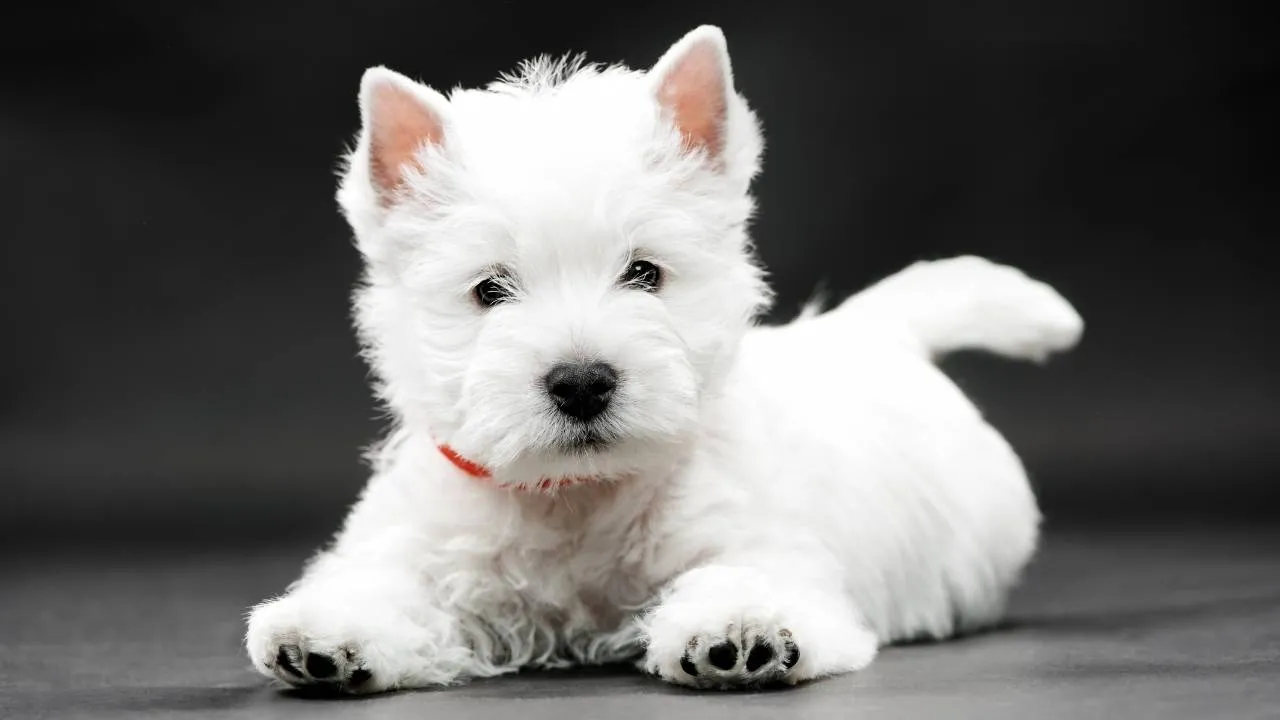
Meet the West Highland White Terrier, or as their fans lovingly call them, Westies—tiny, white, and deceptively adorable.
But don’t let their fluffy snowball appearance fool you. These pint-sized pups were born for the hunt—specifically, the kind that slithers.
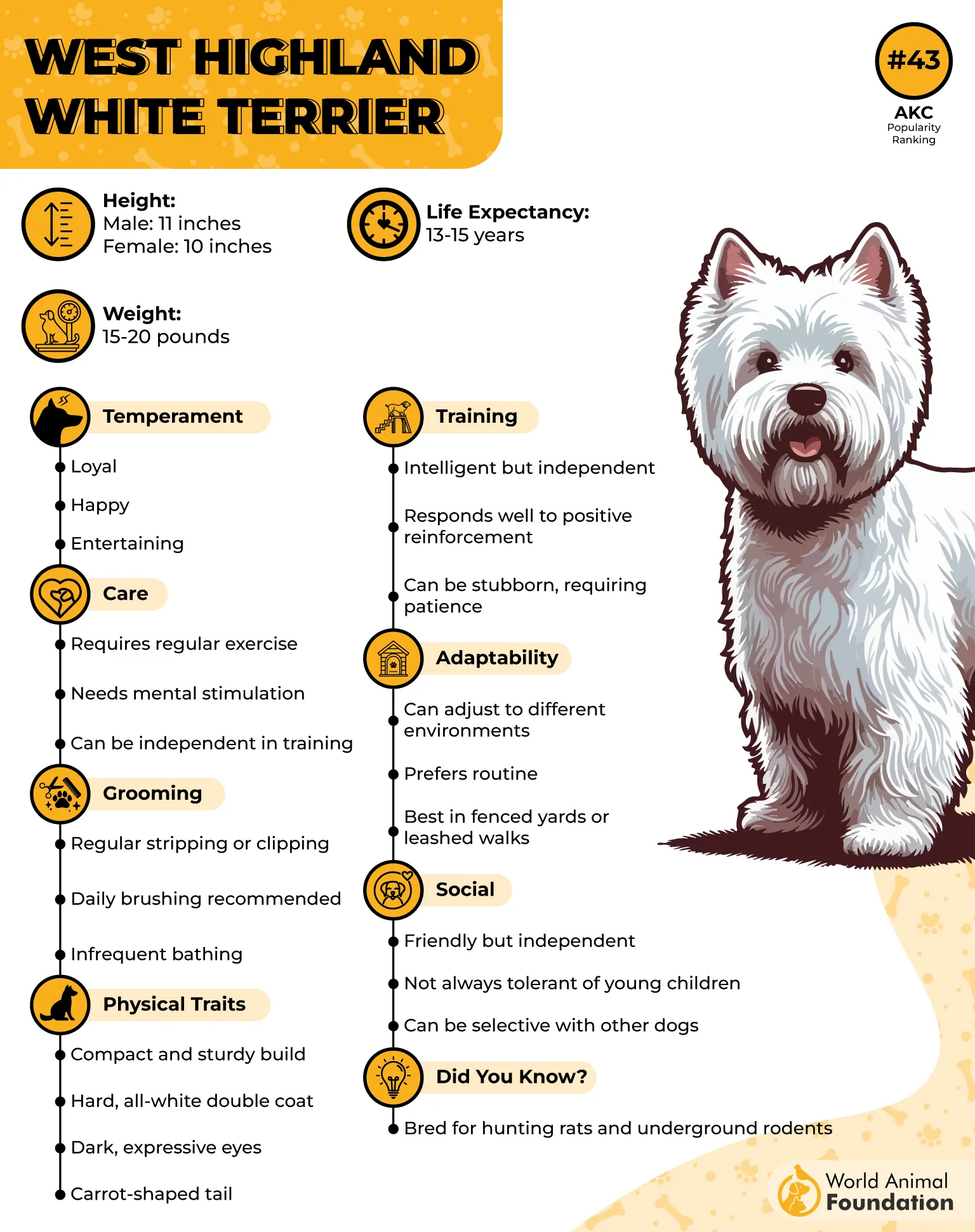
Back in their Scottish homeland, Westies weren’t bred for lap-sitting or luxury—they were trained to go head-to-fang with underground critters like rats, badgers, and yes, even snakes. These little terriers have a “no nonsense, no snakes” policy, and they enforce it with terrier tenacity.
What makes them such good snake detectors?
Nose like a radar: Westies have an exceptional sense of smell. They can sniff out a snake burrow like a sommelier sniffs out an oaky Chardonnay.
Built low and tough: Their compact size and wiry coats make it easy for them to wiggle through brush, dirt, and tunnels—kind of like nature’s version of a furry endoscope.
Fearless to a fault: Westies don’t know they’re small. They think they’re ten feet tall and bulletproof. When they hear a hiss from the underworld, they don’t run away—they dig in.
Their white coat wasn’t just for cuteness either—farmers intentionally bred them white so they wouldn’t get mistaken for a fox or other prey during the hunt. Smart, right? We call that fashion and function.
2. Jack Russell Terrier
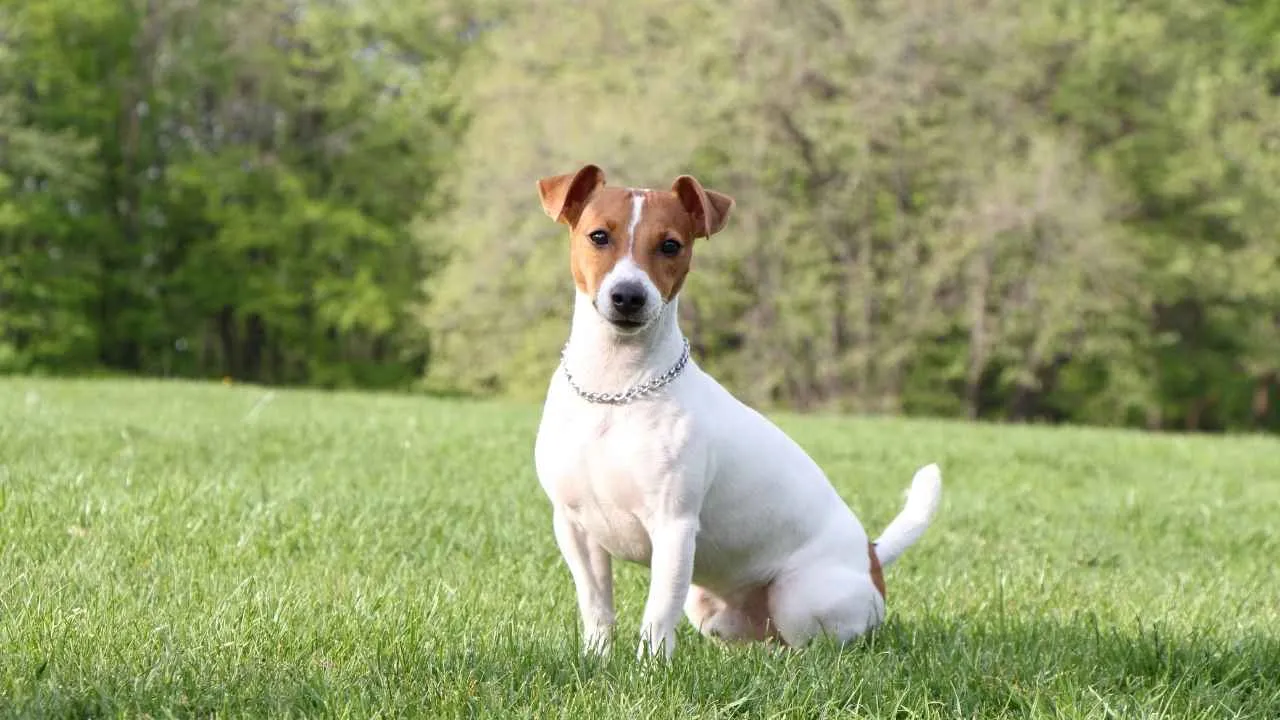
If the Westie is the polite, snow-colored assassin, then the Jack Russell Terrier is the caffeine-fueled action hero who never reads the safety instructions.
Jack Russells are primarily working terriers. They were originally bred to flush foxes out of their dens during hunts and are also used to pursue various ground-dwelling animals like groundhogs, badgers, otters, and both red and grey foxes.
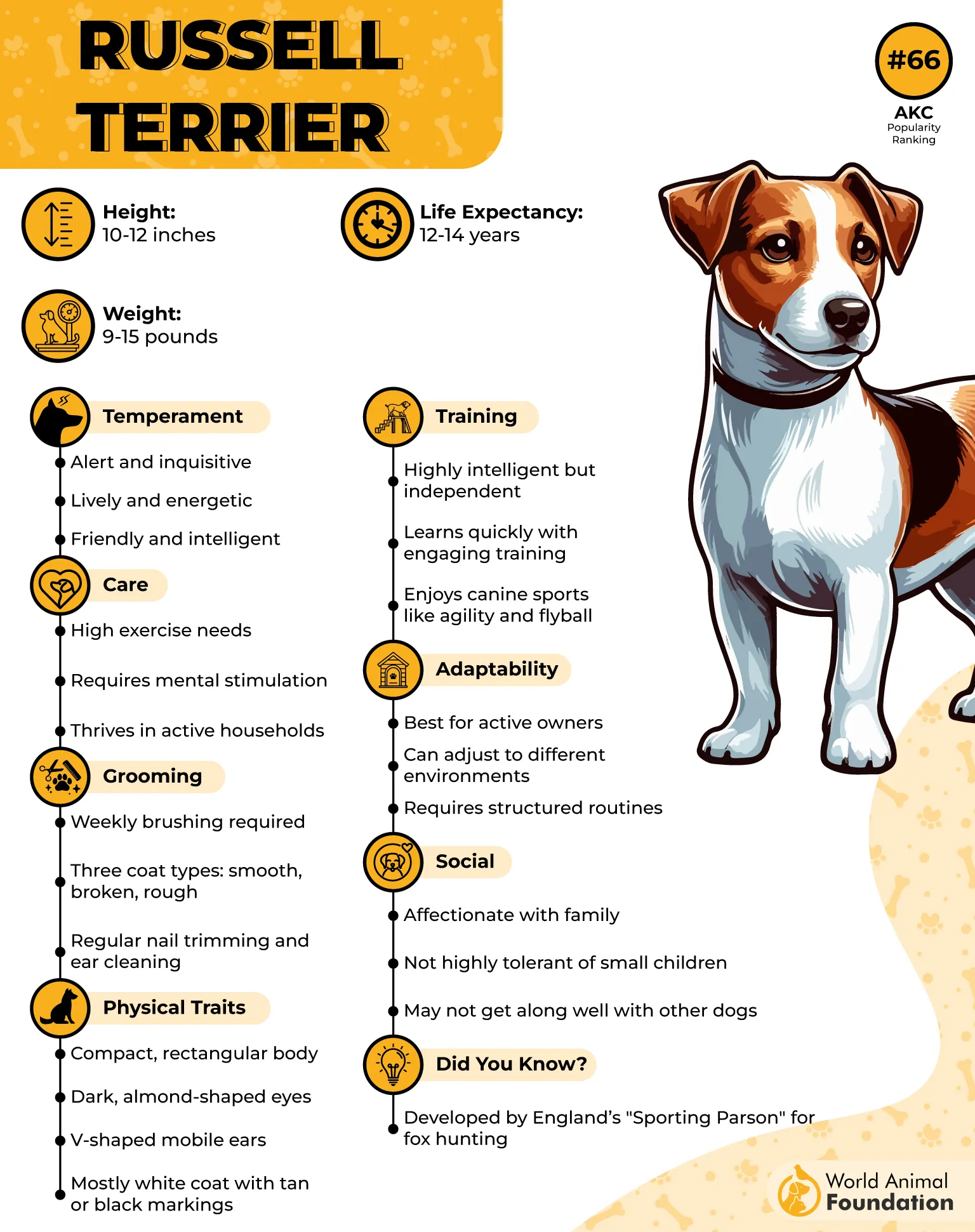
Jack Russells have since added “uninvited underground snake guests” to their résumés. Their intense prey drive, razor-sharp instincts, and zoomies that defy physics make them an absolute menace to anything slithering under your lawn.
Why snakes fear the Jack Russell:
Lightning reflexes: Blink and they’ve already flipped a rock and cleared a burrow.
Tunnel vision—literally: They love to dig, chase, and burrow like they’re auditioning for a role in National Geographic’s Snake Wars.
They never give up. Ever. Like a furry little Terminator with a wagging tail.
These dogs are pure energy, packed in a spring-loaded body, with a brain that says, “Why walk when you can launch yourself into a burrow at Mach 3?”
As per Wikipedia, these dogs aren’t ideal for apartment living unless the owner is committed to meeting their high exercise and stimulation needs. They have an impressive amount of energy for their size.

Sure, they may chew your shoes, bark at their reflection, and outwit your every attempt at discipline, but when that suspicious rustling sound comes from the bushes? You’ll be glad your Jack Russell is on high alert. Just… don’t expect them to leave the snake alone afterward. There’s no “off” button.
3. Miniature Schnauzer
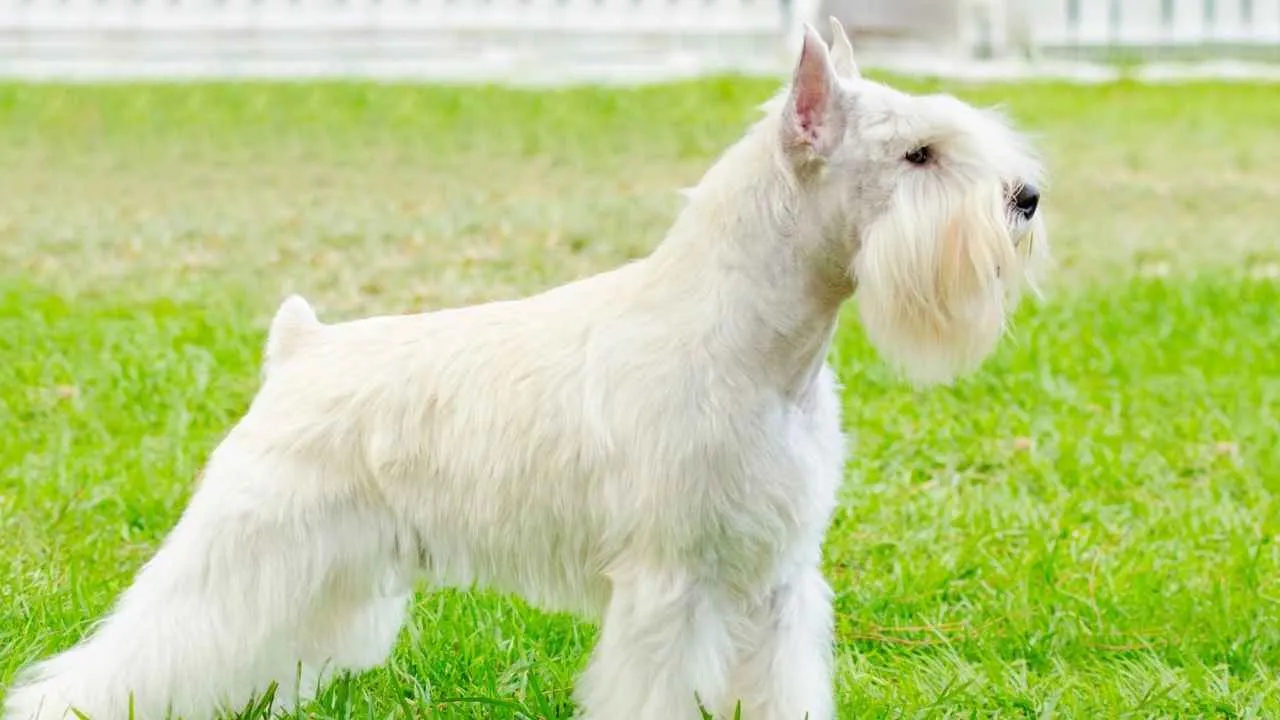
The Miniature Schnauzer may look like a retired professor with that distinguished beard and serious eyebrows, but deep down, this dapper dog is a full-blown snake-hunting vigilante.
Don’t let the bowtie vibes fool you—they’ve got the instincts of a grizzled trench warrior with a vendetta against anything slithering. Originally bred in Germany to eliminate vermin on farms, Mini Schnauzers have kept their sharp prey drive and “no pests allowed” mentality.
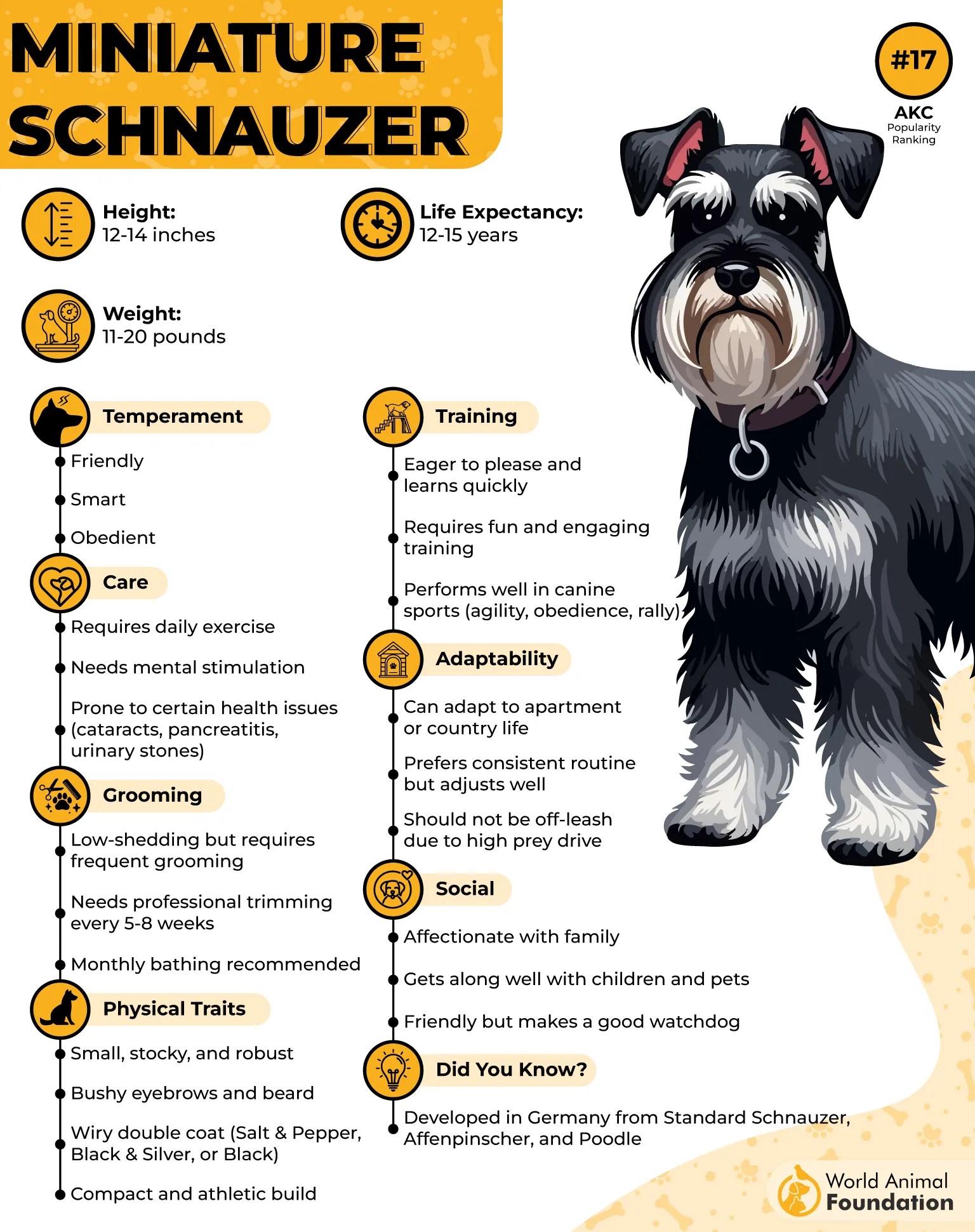
They’re fearless, smart, and always ready to dive into the action with a bark that says, “I may be cute, but I’m not here to play.”
Sharp minds: They don’t just chase blindly—they strategize. Think less “wild beast,” more “military tactician in a cardigan.”
Strong snout game: With a powerful sense of smell, they can detect a snake before it even sends the RSVP to your yard party.
Obsessively clean freaks: They take their job seriously—pests, including snakes, are simply not tolerated in their well-groomed domain.
Sure, they might demand regular grooming and bark at squirrels like it’s a constitutional right, but when it comes to pest control, you won’t find a more dedicated mustachioed warrior.
4. Rat Terrier
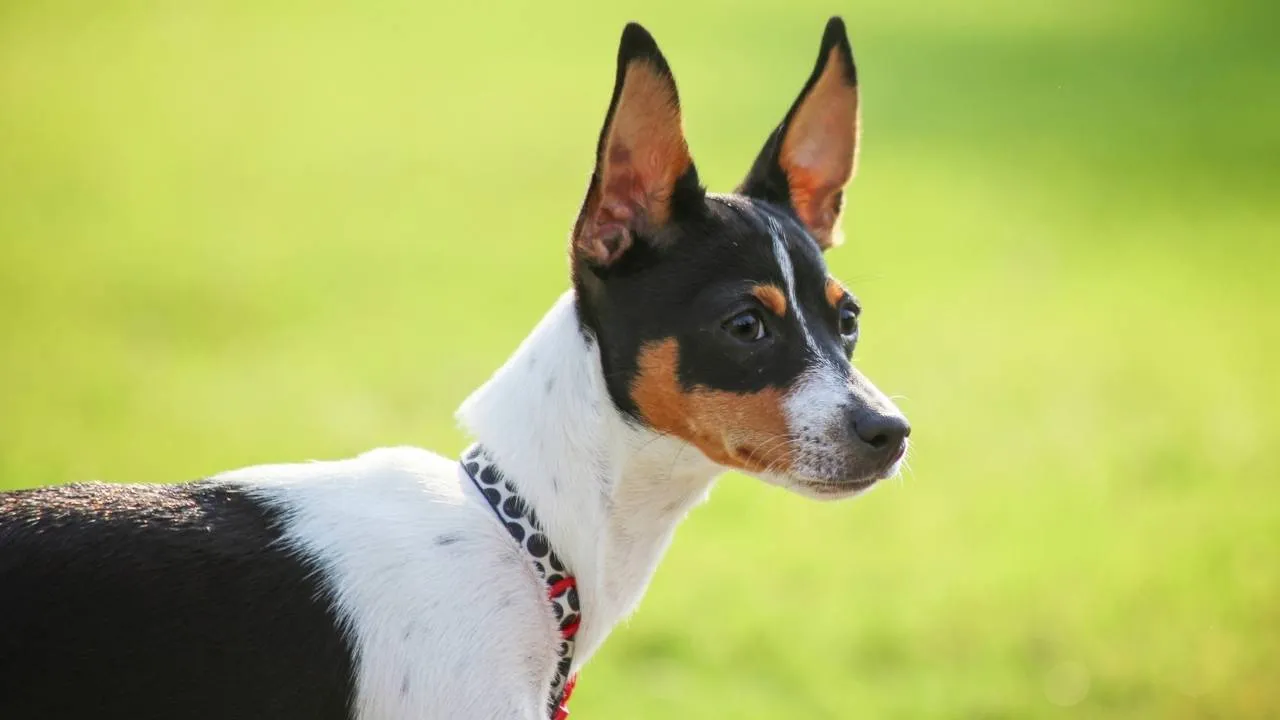
Don’t let the name fool you—Rat Terriers aren’t just in it for the rats. They’re equal opportunity evictors, and if a snake so much as thinks about setting up shop underground, the Rat Terrier will file an immediate “Get Out or Get Bitten” notice.
These American-born hunters were bred to clear farms of pests—mice, rats, gophers, and yes, snakes. Their style is simple: detect, dig, destroy. Their motto? “If it slithers, it’s suspicious.”

Tuned-in senses: Their hearing and smell are on par with high-end surveillance equipment. If a snake so much as exhales, the Rat Terrier is already halfway through the dirt to get it.
Burrow bouncers: Agile, fast, and narrow-bodied, they can wriggle into tight spaces like a furry torpedo with teeth.
Zero fear: A 20-pound Rat Terrier has the ego of a 150-pound wolf. If confidence could kill snakes, these dogs would do it telepathically.
Bonus: They’re loyal, intelligent, and great with families—just as long as your idea of “family fun” includes spontaneous excavation projects in your flower beds.
5. Airedale Terrier
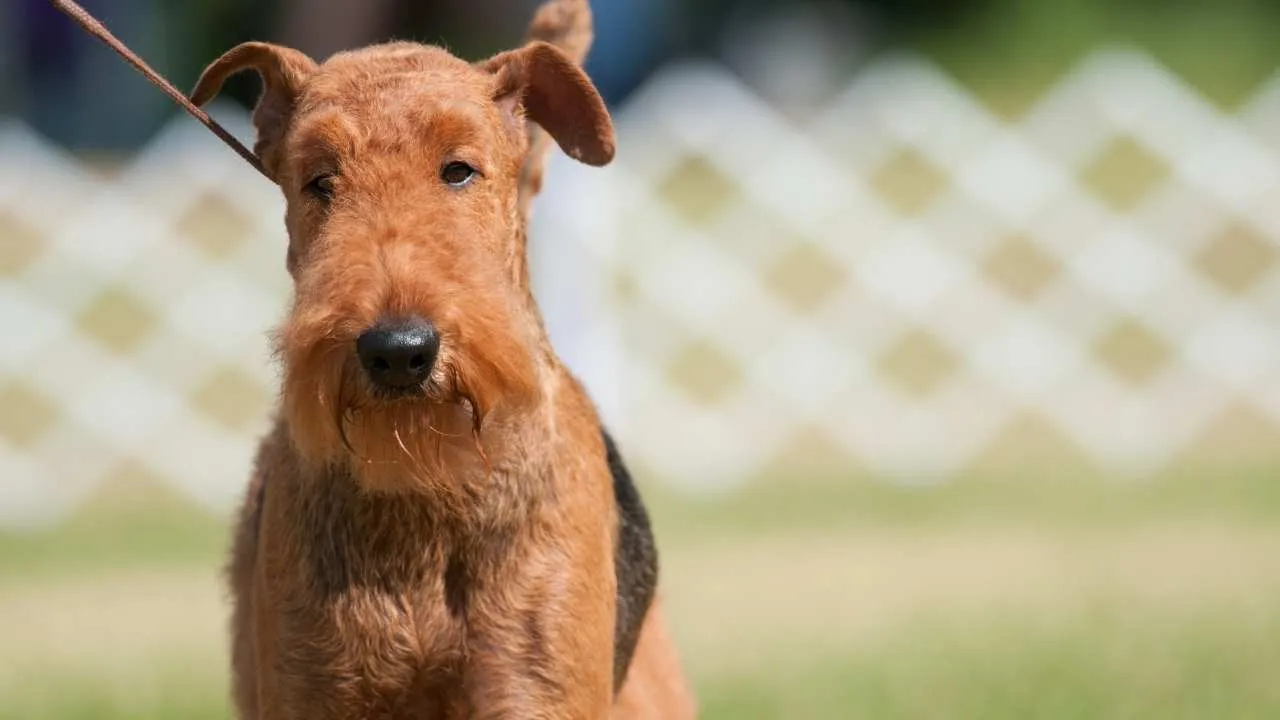
Ah yes, the Airedale Terrier—a.k.a. the “King of Terriers” and possibly the only dog that could audition for both Downton Abbey and Die Hard.
Standing tall, proud, and slightly scruffy, Airedales are the largest of all terriers. But don’t let their gentlemanly stature and stylish beard fool you. Underneath that refined exterior is a certified snake-stomping machine.
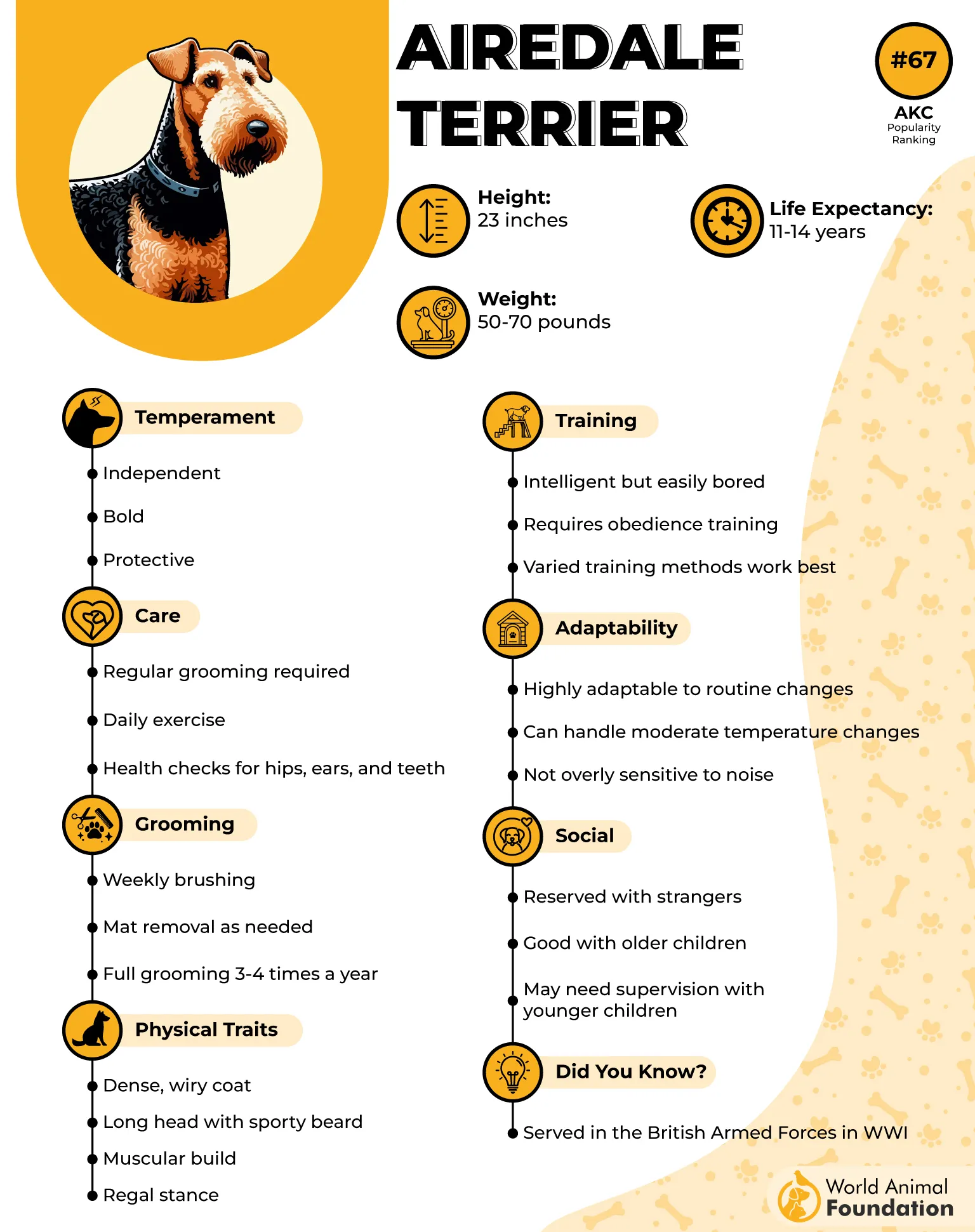
Originally bred to hunt otters and rats along the Aire River in England, these dogs can do it all—track, dig, flush, and fight. They’re like the multi-tool of terriers, and yes, that includes detecting and dealing with underground snakes.
Power meets precision: They’ve got the brawn to handle bigger snakes, and the smarts to know how.
Keen sniffers: Their noses are trained to pick up the faintest scent of trouble, like snake musk buried in the soil.
Fearless to a fault: Let’s just say that if Indiana Jones had to bring a dog on a snake-filled adventure, it’d be an Airedale.
PetMD noted their small stature makes them a good fit for apartment life, as long as their high energy levels are managed with ample exercise and mental challenges.
They’re also incredibly loyal and goofy once they’re off duty—but give them a scent trail and a shovel’s worth of dirt, and they’ll turn your backyard into a tactical snake extraction zone.
6. Australian Terrier
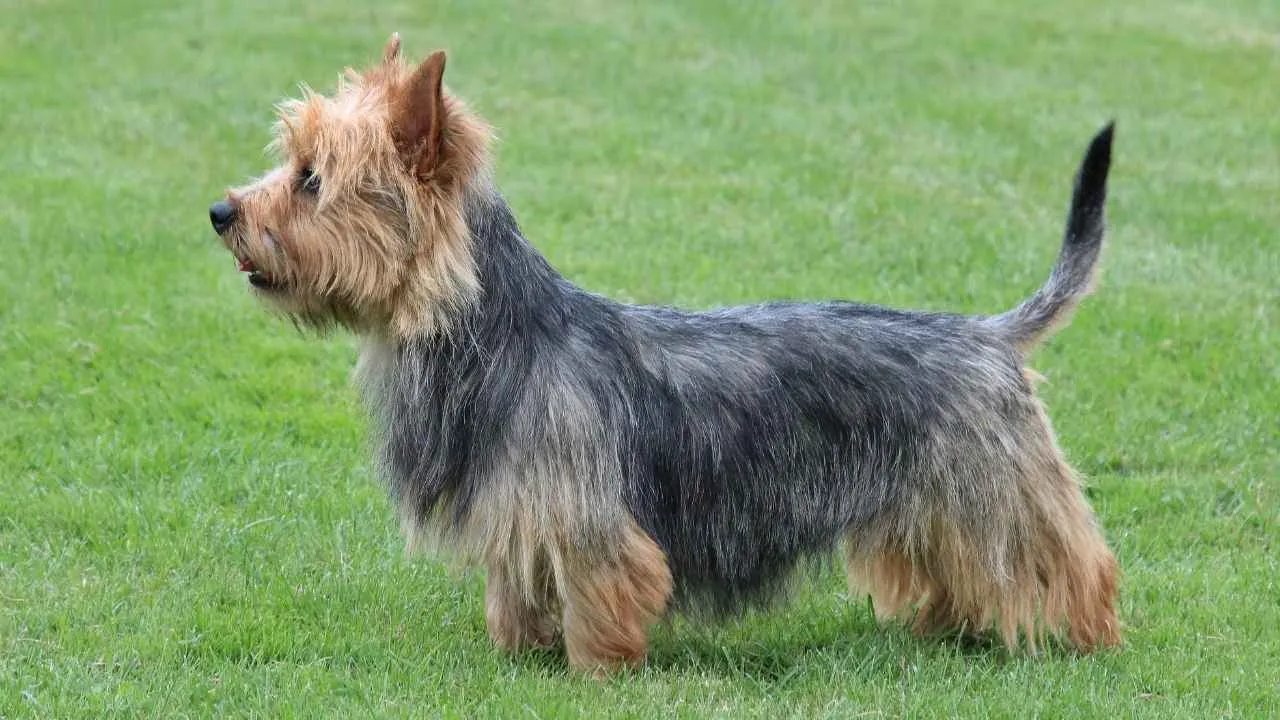
Don’t let their modest size fool you—Australian Terriers pack a punch bigger than their body. Originally bred in the rugged Australian Outback, these scrappy little dogs earned their stripes hunting snakes, rats, and all sorts of underground nuisances.
What they lack in height, they make up for with grit, guts, and a “bring it on” attitude that would make a crocodile think twice.

Outback-ready noses: Developed to sniff out critters hiding under rocks, logs, and yes, snake dens.
Diggers extraordinaire: Their paws are made for rapid excavation—you’ll find them with dirt flying like a tiny tornado when they’re on the trail.
Fearless and fast: Whether it’s a rattlesnake or a garden snake, Aussie Terriers go in headfirst, wagging tail and all.
Bonus: Their wiry coats protect them from bites and scratches—a built-in snakeproof vest of sorts. (Though still best to keep encounters to a minimum!)
7. Cairn Terrier
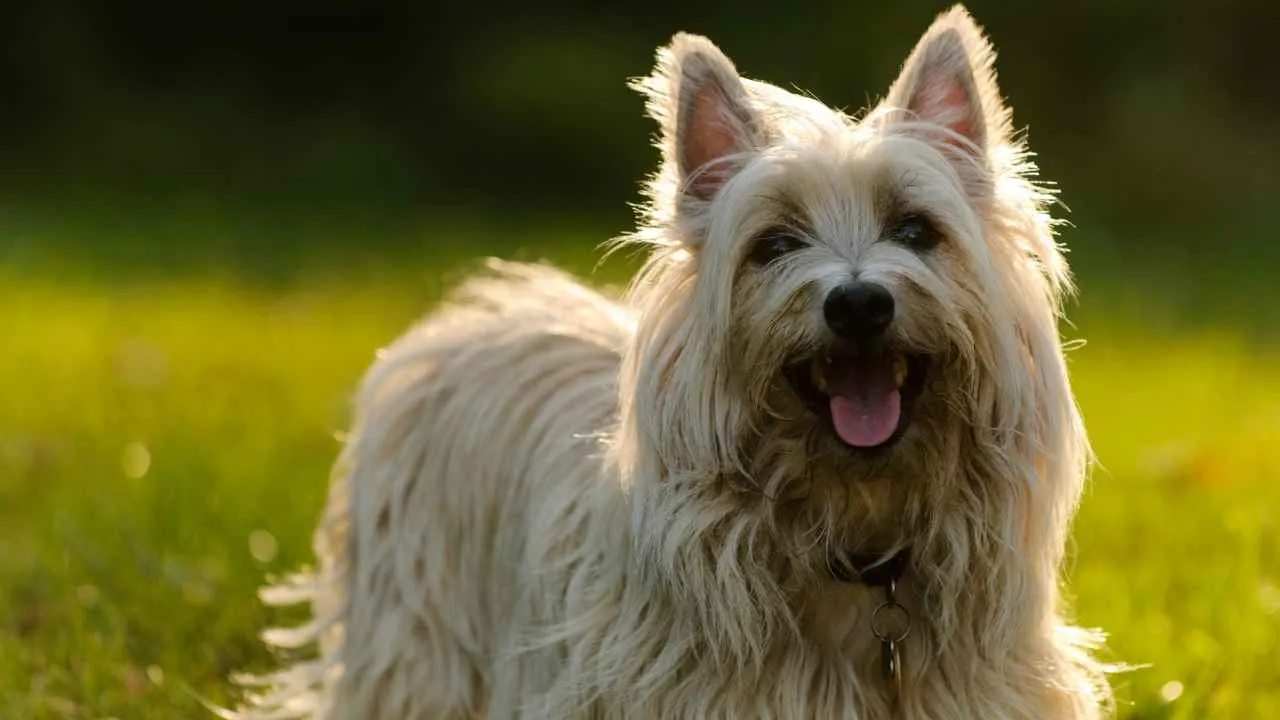
Ah, the Cairn Terrier, that adorable bundle of fluffy determination from the misty Scottish Highlands.
According to the American Kennel Club (AKC), a British breed club describes Cairns as the “best little companion in the world.” These dogs are compact enough to curl up in your lap but strong enough to enjoy active play outside. They thrive when they’re closely involved with family life.
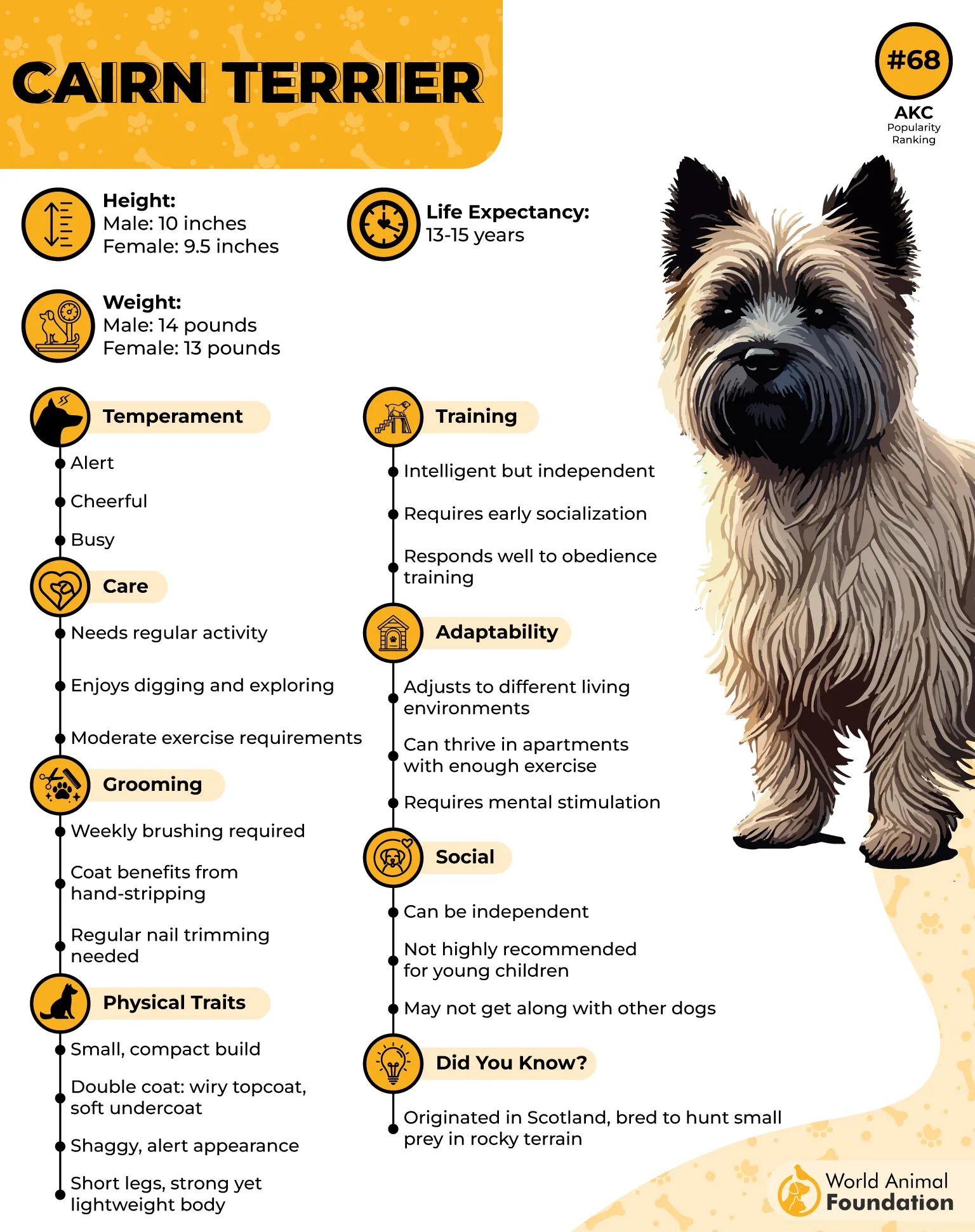
They might look like a walking puffball, but these guys have a nose like a bloodhound and the courage of a lion when it comes to digging up snakes and other unwanted pests.
Famously known as Toto in The Wizard of Oz, the Cairn Terrier has a long history of hunting snakes, rats, and badgers in the rough terrain of Scotland.
Expert diggers: These little furballs can turn a patch of dirt into a crater faster than you can say “snake alert.”
Nose for trouble: Their keen sense of smell means they detect snake hideouts before you even hear a rattle.
Bold as they come: No snake too scary, no hole too deep. Cairns dive in with fearless enthusiasm.
They also require plenty of physical activity and mental engagement; otherwise, they may resort to undesirable habits—like digging up the yard—to keep themselves occupied. Plus, they’re super loyal, playful, and will happily keep your yard snake-free while making sure you get lots of belly rubs in return.
Conclusion
When it comes to dog breeds that detect snakes underground, detection dogs like Border Collies have proven to be an efficient detection method for locating venomous snakes, invasive pythons, and even endangered species. These canines are led on a leash to pinpoint the general location of rodents, rats, and snakes, often hidden underground or in dense habitats.
This method has been a success in wildlife conservation, helping scientists discover elusive predators and monitor population impacts on native species, mammals, and shelter availability. Unlike humans, dogs are less susceptible to being bitten thanks to their training and quick reactions. Though some snakes can be aggressive, these trained dogs—with some luck and a lot of skill—are vital friends in preserving ecosystems and offering new tools for protecting both animals and humans.


